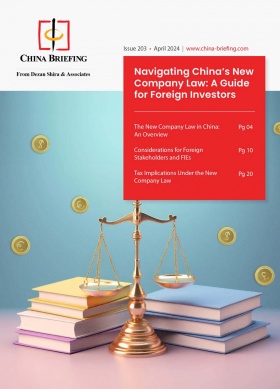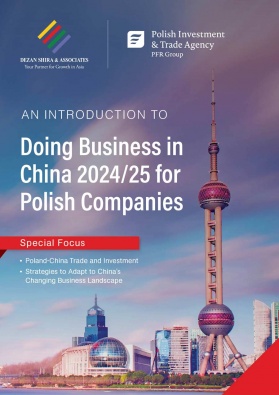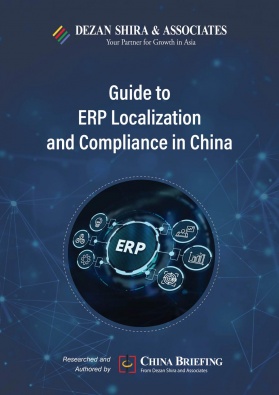China-Singapore Economic Ties: Trade, Investment, and Opportunities
- China has been Singapore’s largest trading partner for 11 consecutive years since 2013. Additionally, China is Singapore’s largest export market and largest source of imports. Singapore is China’s fifth-largest trading partner among ASEAN countries. In 2023, bilateral trade between China and Singapore amounted to US$108.39 billion.
- Singapore has been the largest source of new investments in China for 11 consecutive years since 2013. In April 2022, Singapore surpassed Japan to become the largest cumulative source of foreign investment in China. By the end of 2023, Singapore’s cumulative actual investment in China reached US$141.23 billion.
- As a global financial center and technology hub, Singapore offers opportunities for collaboration, especially in electronic and medical equipment, facilitating cooperation between Chinese firms and partners in both Singapore and mainland China.
China and Singapore have established diplomatic ties since 1990, marking the beginning of a pivotal economic partnership. Since then, Singapore has grown into a crucial investment partner for China. This relationship was further elevated in 2015 with the establishment of a comprehensive partnership, and in 2023, the two nations upgraded their ties to an “All-Round High-Quality Future-Oriented Partnership,” reflecting their shared vision for deeper, forward-looking collaboration.
Singapore has been China’s largest source of new foreign investment for 11 consecutive years since 2013. Likewise, China has remained Singapore’s largest trading partner, largest export market, and largest source of imports for 11 years in a row. Companies from both countries have jointly explored opportunities in the Belt and Road Initiative (BRI) markets, achieving positive outcomes in areas such as infrastructure, financial technology, legal services, and third-party market cooperation.
Currently, there are over 8,500 Chinese enterprises registered in Singapore, covering a wide range of industries, including trade, finance, shipping, infrastructure, logistics, and real estate. Singapore serves as a key hub on the Maritime Silk Road and plays an important role in the high-quality development of the BRI.
In January 2024, both countries revealed a visa exemption policy for their citizens, allowing stays of up to 30 days. This policy, effective from February 9, 2024, enables holders of regular passports to travel freely for tourism, family visits, or business.
In this article, we explore the strengthening economic ties between China and Singapore, highlighting potential opportunities in bilateral trade and investment.
China-Singapore bilateral trade
China and Singapore are both member countries in the Regional Comprehensive Economic Partnership (RCEP) Agreement. This is a Free Trade Agreement (FTA) between 15 countries and is the largest FTA in the world. Since the RCEP Agreement entered into force in 2022, China and Singapore’s year-on-year bilateral trade has increased by 4.4 percent by the fourth quarter of 2023.
|
China-Singapore Trade, 2018-2023 |
||||||
| Year | Total Trade (US$ billion) | China Exports (US$ billion) | China Imports (US$ billion) | Year-over-Year Change (%) | Export Change (%) | Import Change (%) |
| 2018 | 82.88 | 49.17 | 33.72 | 4.6 | 9.2 | -1.6 |
| 2019 | 89.94 | 54.73 | 35.22 | 8.7 | 11.6 | 4.4 |
| 2020 | 89.09 | 57.54 | 31.55 | -1 | 5 | -10.5 |
| 2021 | 94.06 | 55.26 | 38.79 | 5.6 | -4 | 22.9 |
| 2022 | 115.13 | 81.17 | 33.96 | 22.8 | 47.8 | -12.5 |
| 2023 | 108.39 | 76.96 | 31.43 | -2.6 | -1.1 | -6.0 |
Source: Ministry of Commerce, China
Singapore exports to China
Singapore’s top exports to China are electrical equipment and nuclear machinery, two categories that have consistently been major imports over an extended period.
|
Singapore’s Top Exports to China, 2023 |
|
| Product category | Values (US$) |
| Electrical machinery and equipment | 24.06 billion |
| Nuclear reactors, boilers, machinery, and mechanical appliances | 11.89 billion |
| Natural or cultured pearls, precious stones, precious metals | 4.86 billion |
| Plastics | 4.08 billion |
| Optical, photographic, cinematographic, medical or surgical techniques | 3.91 billion |
Source: ITC
What has sharply increased from 2019 to 2023:
- Works of art, collectors’ pieces, and antiques: 142 percent increase.
- Pharmaceutical products: 63 percent increase.
- Copper and articles thereof: 22 percent increase.
- Nuclear reactors, boilers, machinery, and mechanical appliances: 16 percent increase.
Besides these increases, many sectors have witnessed a decrease in recent years. Organic chemical exports from Singapore to China declined by 16 percent annually between 2019 and 2023. The category of precious stones, pearls, precious metals, and jewelry experienced an annual decline of seven percent during the same period.
China exports to Singapore
China’s main export products to Singapore include mineral fuels, electrical machinery, mechanical equipment, plastics, furniture, steel products, organic chemicals, and bags.
|
China’s Top Exports to Singapore, 2023 |
|
| Product category | Value (US$) |
| Electrical machinery and equipment and parts | 15.31 billion |
| Mineral fuels, mineral oils, and products of their distillation | 10.26 billion |
| Nuclear reactors, boilers, and machinery | 9.47 billion |
| Ships, boats, and floating structures | 7.68 billion |
| Plastics and articles thereof | 3.29 billion |
Source: ITC
What has sharply increased from 2019 to 2023:
- Natural or cultured pearls, precious stones, precious metals: 62 percent increase
- Apparel and clothing accessories, knitted or crocheted: 49 percent increase
- Vehicles other than railway or tramway rolling stock, and parts and accessories: 42 percent increase.
- Organic chemicals: 39 percent increase.
- Apparel and clothing accessories, not knitted or crocheted: 36 percent increase
- Leather, saddlery and harness, travel goods, handbags, and similar containers: 34 percent increase
- Tools, implements, cutlery, spoons, and forks, of base metal: 29 percent increase.
- Plastics and articles thereof: 24 percent increase.
China-Singapore investment
Singapore investment in China
Since 2013, Singapore has been China’s largest source of new foreign investment for 11 consecutive years. In April 2022, Singapore surpassed Japan to become China’s largest cumulative source of foreign investment. By the end of 2023, Singapore’s cumulative actual investment in China reached US$141.23 billion.
Singapore has a series of cooperative projects in China. These include three major intergovernmental projects: the Suzhou Industrial Park, the Tianjin Eco-city, and the China-Singapore (Chongqing) Demonstration Initiative on Strategic Connectivity. Additionally, there are the Guangzhou Knowledge City national-level bilateral cooperation project, and local cooperation projects such as the Jilin Food Zone, the Sichuan-Singapore Hi-Tech Innovation Park, and the Nanjing Eco-Island. Singapore has established economic and trade cooperation mechanisms with seven provinces and cities in China, including Shandong, Sichuan, Zhejiang, Liaoning, Tianjin, Jiangsu, and Guangdong. In April 2019, Singapore established a comprehensive cooperation mechanism with Shanghai, and in October, a smart city cooperation mechanism with Shenzhen.
Singapore’s investments in China are mainly concentrated in the manufacturing, financial services, and real estate sectors. In manufacturing, Singaporean companies like Flextronics and Sembcorp Industries have set up production bases in China, leveraging the country’s labor cost advantages and large market size to maximize cost efficiency. In the financial services sector, Singaporean financial institutions such as DBS Bank and OCBC Bank have established branches in China, serving both Singaporean enterprises in China and providing international financial services to local Chinese companies.
Real estate investment is another highlight of Singapore’s presence in China. Singaporean real estate giants like CapitaLand and Mapletree Investments have developed large commercial complexes and residential projects in various Chinese cities, enhancing local commercial vitality and providing stable returns for Singaporean enterprises.
Moreover, Singapore’s investments in China show a clear regional concentration. For example, Singaporean companies have particularly dense investments in the Yangtze River Delta and the Pearl River Delta regions, which are not only economically developed but also have excellent infrastructure and policy environments, making them ideal for the operation and development of foreign enterprises.
China’s investment in Singapore
According to data from China’s Ministry of Commerce, China’s direct investment flow to Singapore amounted to US$8.295 billion in 2022, with a cumulative direct investment stock of US$73.45 billion by the end of that year. China’s investment in Singapore spans all major industries, with the highest cumulative investment amounts in the finance and insurance sector, and trade sector. Chinese investment accounts for a relatively large share of foreign investment in sectors like construction, trade, and real estate. Approximately 8,500 Chinese companies operate in Singapore.
China’s investments in Singapore are primarily focused on mergers and acquisitions. Major investment projects include: Bank of China Group’s acquisition of Singapore Aircraft Leasing Company; Huaneng International’s acquisition of Tuas Power and development of the Tembusu Multi-Utilities Complex and desalination plant projects; CNP C’s investment in building oil storage facilities and acquisition of Singapore Petroleum Company; HNA Group’s acquisition of container leasing companies, aircraft leasing companies, and Xun Tong Group; China Academy of Building Research’s acquisition of Singapore’s CPG Corporation; and China Nesta Consortium’s acquisition of GLP, among others
The business environment in Singapore is attractive to Chinese companies due to language accessibility, transparent governance, and established business hubs across multiple industries. Many major Chinese companies have already invested in or launched operations in Singapore, inspiring other business owners with the confidence to expand their operations there. With its stable, highly advanced environment in financial services and high technology, Singapore continues to attract a growing number of Chinese companies in these sectors.
|
China Direct Investment in Singapore, 2018-2022 |
|||||
| 2018 | 2019 | 2020 | 2021 | 2022 | |
| FDI newly added (US$ billion) | 6.41 | 4.83 | 5.92 | 8.4 | 8.3 |
| FDI in stock (US$ billion) | 50 | 52.64 | 59.86 | 67.2 | 73.45 |
Source: MOFCOM, China
China-Singapore agreements
Free Trade Agreement
In 2008, Singapore signed the China-Singapore Free Trade Agreement (FTA) with China, becoming the first Asian country to do so. In 2018, the two countries signed a protocol to upgrade the bilateral free trade agreement, and follow-up negotiations began in 2020. In April 2023, both sides substantially completed the follow-up negotiations for the upgraded China-Singapore FTA.
The FTA serves to enhance trade, investment, and economic cooperation between China and Singapore. The agreement encompasses trade in goods and services, investment protection, and cooperation in various sectors, laying a strong foundation for robust bilateral trade relations.
Key provisions of the FTA include the removal of tariffs on most goods traded between the two countries, benefiting Singaporean exports such as electronics, chemicals, and processed foods, while also supporting China’s exports of machinery and textiles to Singapore. The agreement also grants Singaporean service providers preferential access to Chinese markets in sectors such as legal, financial, and telecommunications services.
Singapore-China Double Taxation Avoidance Agreement
The China-Singapore Double Tax Treaty (DTA), effective in 1986 and revised in 2007, aims to prevent double taxation on income and promote cross-border economic cooperation by setting clear guidelines on tax liabilities for income generated between the two countries.
The treaty specifies withholding tax rates on various income sources, thus alleviating tax burdens on cross-border transactions:
● Dividends: 5-10 percent. Withholding tax on dividends is capped at 5 percent if the beneficial owner holds at least 25 percent of the shares and 10 percent otherwise.
● Interest: Withholding tax on interest payments is limited to 10 percent.
● Royalties: Royalty payments for intellectual property use are taxed at a maximum rate of 10 percent.
Singapore uses the credit method to prevent double taxation. Under this method, when a Singapore resident earns income from China that has already been taxed in China, Singapore allows a tax credit for the Chinese taxes paid. This credit can then be applied against the Singapore tax owed on the same income, effectively reducing the overall tax burden for Singaporean residents earning foreign income.
The credit method encourages cross-border investments by making it less costly for Singaporean residents to earn income in China, as they are not doubly penalized with taxes in both jurisdictions. This provision under the DTA also supports greater clarity and predictability in tax liabilities, promoting smoother economic cooperation between China and Singapore.
Regional Comprehensive Economic Partnership (RCEP) Agreement
The RCEP Agreement is a landmark FTA involving 15 countries: Brunei Darussalam, Cambodia, Indonesia, Lao PDR, Malaysia, Myanmar, the Philippines, Singapore, Thailand, Vietnam, Australia, China, Japan, the Republic of Korea, and New Zealand. As the world’s largest FTA, RCEP encompasses approximately 30 percent of global GDP and accounts for about a third of the world’s population.
The RCEP Agreement aims to enhance trade and investment among its members by reducing tariffs, simplifying customs procedures, and promoting economic integration. Key features of the Agreement include:
● Tariff reductions: RCEP facilitates the gradual elimination or reduction of tariffs on goods traded among member countries, fostering easier access to markets.
● Trade in services: The Agreement provides commitments on market access for various service sectors, enhancing opportunities for businesses across member states.
● Investment protection: RCEP includes provisions that promote and protect foreign investments, enhancing the investment climate among member countries.
● E-commerce: The Agreement addresses digital trade, establishing frameworks for cross-border data flows and promoting e-commerce among members.
● Intellectual property rights: RCEP establishes stronger intellectual property protections, encouraging innovation and collaboration among participating nations.
Overall, RCEP represents a significant step towards economic integration in the Asia-Pacific region, strengthening ties between China and Singapore, along with other member countries, and creating a more collaborative and interconnected trading environment.
Opportunities and future prospects
Electronics industry
The electronics industry is one of Singapore’s traditional industries, accounting for approximately 45.6 percent of total manufacturing output in 2022, with an annual growth rate of 2.6 percent. Key products include semiconductors, computer equipment, data storage devices, telecommunications, and consumer electronics. Major companies include Flex, GlobalFoundries, Infineon, and Micron Technology.
It presents a valuable opportunity for companies from both nations to expand their market reach and leverage cross-border synergies. With China already positioned as the world’s largest exporter of consumer electronics and maintaining a strong presence in mid and downstream production, firms can unlock significant spillover effects. By developing operations in each other’s markets, businesses can enhance diversification and broaden service offerings, supporting long-term growth in both countries.
Biomedical industry
A strategically emerging industry that Singapore has focused on cultivating in recent years, accounting for about 4.2 percent of total manufacturing output in 2022. Major international pharmaceutical companies, such as Chugai Pharmaceutical, MSD (Merck), and GlaxoSmithKline (GSK), are primarily located in Biopolis and Tuas Biomedical Park.
With the accelerating global trend of population aging and the growing number of patients with chronic diseases, demand in the medical device market is expected to continue rising. As a major healthcare hub in Asia, Singapore has a strong demand for high-quality, high-tech medical devices.
In 2022, China released the “14th Five-Year Plan for Pharmaceutical Industry Development”, emphasizing the need to create new international competitive advantages and to integrate at a higher level into global innovation networks and industry systems. China’s medical industry has established a mature value chain across R&D, product manufacturing, clinical trials, and marketing, and possesses sufficient international competitiveness. Consequently, exporting medical products and expanding into overseas markets has become a key strategy for companies seeking to achieve economies of scale and explore growth opportunities. At the same time, Singapore holds advantages in equipment, technology, and financial capital. Bringing advanced technologies and products into the Chinese market is also a strategic approach to meet the growing domestic demand.
Digital economy
Singapore holds a significant advantage in the digital economy, underpinned by its active engagement in global digital agreements. The country is a key member of the Digital Economy Partnership Agreement (DEPA) alongside Brazil and New Zealand, enabling Singapore to strengthen its digital connectivity and cooperation on data flows, AI, and e-commerce, enhancing its competitiveness in the international digital landscape.
Both countries can leverage their strengths in financial technology to develop innovative solutions. Singapore’s robust fintech ecosystem and China’s advancements in digital payments and blockchain technology can lead to the creation of new financial products and services that benefit both markets.
Moreover, by sharing expertise in areas such as IoT, AI, and data analytics, China and Singapore can develop smart city solutions that improve infrastructure, transportation, and public services.
The two countries can also work together to streamline e-commerce and digital trade. By harmonizing regulations and standards, they can facilitate cross-border digital transactions, making it easier for businesses to operate in both markets.
Green economy
Singapore is also a leader in the green economy. The government has launched a US$ 13.58 billion fund dedicated to supporting renewable energy, green infrastructure, and waste management, highlighting its commitment to sustainable growth. This investment aims to position Singapore as a regional hub for environmental initiatives and to drive progress in green technology and resource efficiency.
China and Singapore have significant potential for cooperation in the green economy, leveraging their respective strengths and shared goals for sustainable development:
- Renewable energy: Both countries can invest in joint ventures to develop and deploy renewable energy technologies such as solar, wind, and hydroelectric power. Singapore’s expertise in urban planning and smart city technologies can complement China’s large-scale renewable energy projects.
- Green finance: Singapore, as a global financial hub, can facilitate green financing for sustainable projects in China. This includes issuing green bonds and creating investment funds focused on environmental sustainability.
- Sustainable urban development: Collaborative projects in sustainable urban development can be expanded. For example, the Tianjin Eco-city is a successful model of cooperation that can be replicated in other regions. Both countries can share best practices in building energy-efficient infrastructure and promoting green building standards.
- Environmental technologies: Joint research and development in environmental technologies, such as waste management, water treatment, and pollution control, can lead to innovative solutions that benefit both nations. Singapore’s advanced water management technologies can be particularly useful in addressing water scarcity issues in China.
- Policy and regulatory frameworks: Sharing experiences and aligning policies on environmental regulations and standards can help both countries achieve their green economy goals. Collaborative efforts in setting up carbon trading systems and implementing stringent environmental regulations can drive sustainable practices.
By focusing on these areas, China and Singapore can not only enhance their bilateral relations but also contribute significantly to global sustainability efforts.
About Us
China Briefing is one of five regional Asia Briefing publications, supported by Dezan Shira & Associates. For a complimentary subscription to China Briefing’s content products, please click here.
Dezan Shira & Associates assists foreign investors into China and has done so since 1992 through offices in Beijing, Tianjin, Dalian, Qingdao, Shanghai, Hangzhou, Ningbo, Suzhou, Guangzhou, Haikou, Zhongshan, Shenzhen, and Hong Kong. We also have offices in Vietnam, Indonesia, Singapore, United States, Germany, Italy, India, and Dubai (UAE) and partner firms assisting foreign investors in The Philippines, Malaysia, Thailand, Bangladesh, and Australia. For assistance in China, please contact the firm at china@dezshira.com or visit our website at www.dezshira.com.
- Previous Article Annual Compliance Requirements in China: A Step by Step Guide
- Next Article China’s Enhanced Beneficiary Owner Filing System: Key Points of New Measures
























